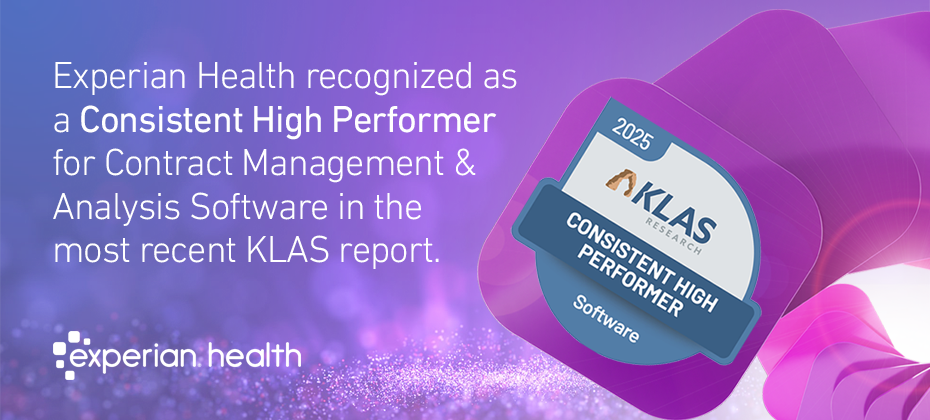
The growing shift from inpatient to outpatient care continues. The U.S. ambulatory services market was estimated at USD 289.5 billion in 2023 and is projected to grow at a CAGR of 5.38% from 2024 to 2030. A Deloitte study notes that the gap between inpatient and outpatient revenue has been closing for two decades. But what’s driving this boom? Clinical advances, patient demand for lower-risk and lower-cost options and payer pressure all play a role.
New technologies, like advances in orthopedics, allow more procedures to be performed at outpatient service centers instead of costly hospital settings. Free-standing ambulatory surgery sites are expected to see a 14% volume boost over the next decade as more service lines, like cardiovascular and neurosciences, begin to shift procedures from inpatient to outpatient facilities.
The ongoing growth in outpatient services presents a unique opportunity for revenue cycle leaders to use technology to improve outpatient revenue—and the overall patient experience.
Grow outpatient revenue with more digital care
Patients want a better experience at every step of the patient journey. They want to see their doctor faster, manage appointments online and understand how much it costs—with as little red tape as possible. A lack of streamlined patient access and transparency often results in no-shows, a rise in claims denials, wasted staff time and patient complaints. However, by opening the digital front door, providers can give patients the self-service tools they crave, improve the care experience, keep outpatient schedules full and increase revenue. Additionally, providers can use technology like artificial intelligence (AI) to lower claim denial rates.
Here are five strategies to increase outpatient revenue in 2025.
1. Make patient access simple
Patients want to see their doctor faster. In Experian Health’s latest State of Patient Access survey, eight in ten patients who reported being unhappy with their provider experience cited waiting for an appointment as a top complaint. When trying to schedule, patients are also frustrated by the friction that comes with complex processes, clunky technology systems and sparse provider communication.
Outdated manual workflows, staffing shortages and lack of staff training often result in challenges for both patients and providers. Improved patient access is at the heart of patient-centered healthcare. Technology designed to put the patient in control, like online patient scheduling and digital patient intake tools, offer continuous patient engagement, optimized scheduling, and streamlined administrative processes. By leveraging modern patient access solutions, providers can improve patient experiences and alleviate the impact of staffing shortages.
2. Reduce appointment no-shows
Missed appointments cause headaches for patients, providers, and revenue cycle managers. Online scheduling and mobile registration are also top of mind for patients. In Experian Health’s State of Patient Access 2024 survey, 89% of patients said they wanted self-service scheduling and 85% reported a dislike for filling out repetitive intake paperwork.
Online patient scheduling software puts patients in the driver’s seat, providing convenient and secure 24/7 access to book, reschedule, and cancel appointments on their own time. Solutions like Patient Schedule sync seamlessly to an organization’s scheduling rules, and patients receive automated appointment reminders by text or IVR. On average, providers that use Experian Health’s scheduling solution experience an 89% show rate, a 50% reduction in scheduling time, and a 32% increase in patients per month.
Patient intake tools like Registration Accelerator simplify mobile registration with a streamlined text-to-mobile experience. Once registration is complete, automated returns of forms, patient-check-ins and demographic information ease the burden on staff.
3. Help patients prepare for outpatient costs
Patients need a clear breakdown of their financial responsibility before receiving care. Without it, they may be unable to prepare for care costs appropriately. While hospitals are now required to share detailed pricing for at least 300 common procedures, confusion around a patient’s actual financial responsibility still persists. More than half of patients report turning to their provider for help understanding what insurance covers.
Digital solutions that provide accurate, upfront estimates empower patients. More than eight in ten patients say pre-service estimates help them prepare for the cost of care. Patient Payment Estimates provide upfront, real-time estimates of what a patient will owe. Providers can offer convenient and secure payment links, and allow patients to pay their bills online or see customized payment plans.
Outpatient providers can further maximize the chance of reimbursement by running health insurance coverage checks across the entire revenue cycle. This can help find billable coverage that may have been forgotten and give patients greater certainty about what they’ll owe.
4. Automate healthcare collections
Collections are often a major challenge in the outpatient revenue cycle. Outpatient procedures can be costly, even with insurance, leaving patients responsible for potentially large bills. Automating healthcare collections allows for faster, more efficient, and more compassionate collections. Tools like Collections Optimization Manager helped Novant Health achieve an overall recovery rate of 6.5% and increase revenue and cost savings to a rolling average return on investment of 8.5:1.
With automated tools like Patient Financial Clearance, providers can assess patients’ ability to pay and assign them to an appropriate financial pathway. This allows patients to quickly get the assistance they need while freeing up valuable staff time.
5. Streamline claims to increase outpatient revenue
Denied claims continue to be problematic for providers. In Experian Health’s State of Claims 2024 report, which surveyed 210 healthcare revenue cycle leaders, nearly three-quarters of providers feel claims denials are increasing, while 67% feel getting paid is taking longer. Claims management software can help end the cycle of denials. However, around half of providers still use a manual claims review process, and only 28% feel confident in their understanding of automation, machine learning and AI.
Adopting automated and integrated healthcare claims management solutions can reduce errors, prevent undercharges, and ensure a higher first-pass payment rate. Tools like Experian Health’s ClaimsSource® simplify the entire claims process, while Claim Scrubber helps providers submit more accurate claims. Digital solutions can also automate claim status monitoring and eliminate manual denial processes.
Implementing AI tools to interpret past claims data and recommend next steps can improve outpatient claim denial statistics. Tools like AI AdvantageTM look at past payer behavior and historical claims data to predict and prevent denials.
AI Advantage’s two components, Predict Denials and Denial Triage, help providers respond to growing denial challenges by identifying claims with a high likelihood of denial before submission, and focus on remits that have the most impact. See how:
Find out more about how Experian Health’s revenue cycle management solutions can help healthcare organizations increase outpatient revenue, keep pace with growing patient volumes, improve patient satisfaction and boost their bottom lines.


